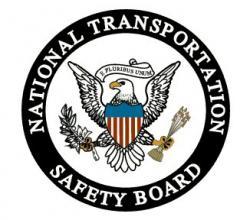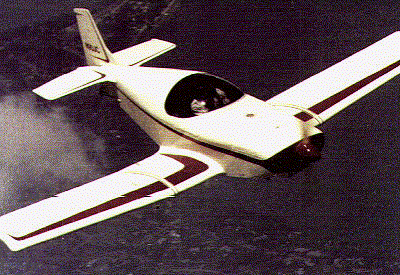First Flight In Experimental Bird Kills Pilot
 Despite a fair amount of recent
experience in similar types of aircraft, the first flight in a KR-2
homebuilt proved to be the last for one pilot. The KR-2 (file
photo) went down after declaring that he had a fire in the cockpit,
in what turned out to be the third flight for the aircraft and the
first in that specific aircraft, for the pilot.
Despite a fair amount of recent
experience in similar types of aircraft, the first flight in a KR-2
homebuilt proved to be the last for one pilot. The KR-2 (file
photo) went down after declaring that he had a fire in the cockpit,
in what turned out to be the third flight for the aircraft and the
first in that specific aircraft, for the pilot.
NTSB Identification: ERA09LA231
14 CFR Part 91: General Aviation
Accident occurred Saturday, April 04, 2009 in Valdosta, GA
Aircraft: Howard William C KR-2, registration: N456CH
Injuries: 1 Fatal.
This is preliminary information, subject to change, and may
contain errors. Any errors in this report will be corrected when
the final report has been completed.
On April 4, 2009, about 1847 eastern daylight time (EDT), an
experimental amateur-built Howard KR-2, N456CH, was destroyed by
fire during an off-airport landing. The certificated private pilot
was killed. Visual meteorological conditions prevailed, and no
flight plan was filed for the local personal flight which departed
from Valdosta Regional Airport (VLD), Valdosta, Georgia. The
personal flight was conducted under the provisions of 14 Code of
Federal Regulations Part 91.
The flight departed VLD approximately 1820 and was required to
remain with in 25 nautical miles of VLD until the airplane had
flown at least a total of 40 hours of logged flight time. This
limitation along with others had been issued for the Phase 1 flight
testing under the Experimental Operating Limitations by the Federal
Aviation Administration (FAA).
The pilot called the FAA Air Traffic Control Tower (ATCT) at VLD
and reported that he had smoke coming into the cockpit and was
about 9 miles from the airport. Subsequently the pilot reported a
fire in the cockpit and the ATCT received no further communication
from the pilot.
According to a pilot friend of the accident pilot, the accident
flight was the third flight for this airplane and the first flight
in this airplane for the accident pilot. This individual helped the
accident pilot install the engine into the accident airplane and
also performed the first 2 flights in the accident airplane; the
second of the two flights occurred on February 21, 2009. That
flight was approximately 1.7 hours in duration and was flown in
order to verify that all the oil temperatures, pressures and
controls were "accurate and stable for an extended period of time."
After that test flight he noted two discrepancies, the first
discrepancy involved the altimeter which was locked up at 2,500
feet above mean sea level. The second discrepancy was that the fuel
valve located on the 15 gallon fuel header tank in front of the
pilot had blue staining, which was the same color as 100LL aviation
fuel, when he went to close the valve. He further stated that the
accident pilot installed a radio and a cigarette lighter in the
airplane about a week prior to the accident flight. The accident
pilot had received between 10 and 15 hours of flight experience in
a KR-2S.

The airplane was examined by an FAA inspector who responded to
the accident site. The airplane was located beneath a tree along a
fence row. The airplane structure, which was comprised of wood and
foam/fiberglass, exhibited extensive fire damage. The FAA reported
that a small portion of the wingtip was located in the adjacent
tree and a wheel from one of the landing gear was located a few
feet from the main wreckage. The airplane was consumed by both an
inflight and post impact fire. The inspector was unable to confirm
flight control continuity due to the extensive fire damage.
According to FAA records the accident airplane was manufactured
in 2008 and was issued a special airworthiness certificate on
August 8, 2008. The airplane was equipped with a GM Corvair, six
cylinder, 100 horsepower engine, and a Prince P-Tip wood and
composite propeller.
The 1853 recorded weather observation at VLD 2 miles northeast
of the accident site, reported calm winds, clear skies, temperature
24 degrees Celsius (C), dew point 9 degrees C, and an altimeter
setting of 29.95 inches of mercury.
 NTSB Final Report: Rutan Long-EZ
NTSB Final Report: Rutan Long-EZ ANN FAQ: Turn On Post Notifications
ANN FAQ: Turn On Post Notifications Classic Aero-TV: ICAS Perspectives - Advice for New Air Show Performers
Classic Aero-TV: ICAS Perspectives - Advice for New Air Show Performers ANN's Daily Aero-Linx (06.28.25)
ANN's Daily Aero-Linx (06.28.25) Aero-News: Quote of the Day (06.28.25)
Aero-News: Quote of the Day (06.28.25)




